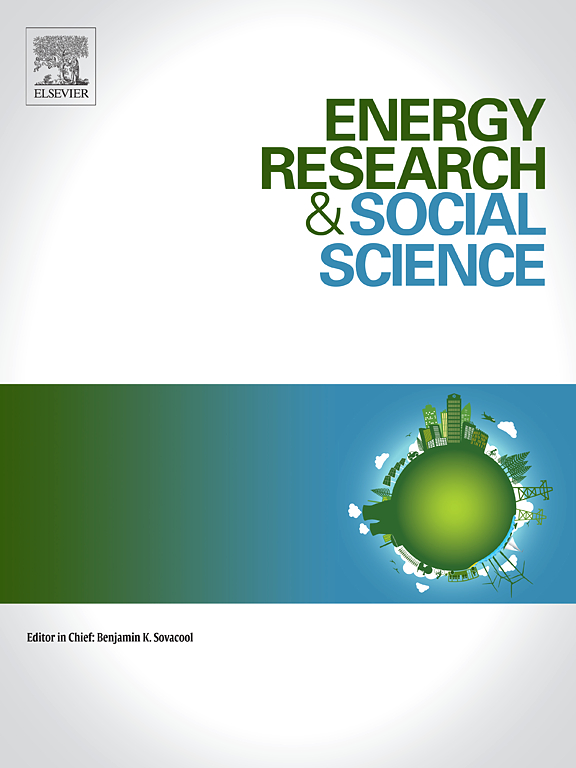谁能负担得起太阳能?了解政策干预对脆弱社区住宅太阳能采用的影响
IF 7.4
2区 经济学
Q1 ENVIRONMENTAL STUDIES
引用次数: 0
摘要
减少温室气体排放的政策是能源转型的重要组成部分。住宅采用太阳能可以减少能源部门的此类排放,同时为采用太阳能的家庭带来好处。然而,由于采用这些技术的物理和财务障碍,脆弱社区可能无法从住宅太阳能中获益。针对低收入家庭的太阳能激励政策已在几个州被采用,以解决这些潜在的公平问题。本文使用差异中的差异方法来研究一项此类政策的影响,即纽约州2010年至2021年的可负担太阳能计划。我们的方法发现,激励措施本身并没有增加低收入人口普查区的太阳能采用率。我们还发现,在少数民族人口比例较高的人口普查区,收养人数略有增加,这表明不同人口群体之间存在异质效应。将这些结果与对纽约太阳能安装商的后续调查相结合,我们提供了一些限制可负担太阳能计划影响的潜在障碍的证据。我们利用这些发现为旨在改善太阳能公平获取的其他政策提供见解。本文章由计算机程序翻译,如有差异,请以英文原文为准。
Affordable solar for whom? Understanding the effects of a policy intervention on residential solar adoption among vulnerable communities
Policies that reduce greenhouse gas emissions are an important component of the energy transition. Residential solar adoption allows for decreasing such emissions from the energy sector while generating benefits to adopting households. However, vulnerable communities might not be able to access benefits from residential solar due to physical and financial barriers to adoption of these technologies. Solar incentive policies targeting low income households have been adopted in several states to address these potential equity issues. This paper uses a difference-in-differences approach to examine the effects of one such policy, New York State's Affordable Solar program from 2010 to 2021. Our approach finds that the incentive itself does not increase solar adoption in low-income census tracts. We also find small increases in adoption among census tracts with high shares of minority populations suggesting heterogeneous effects among different demographic groups. Combining these results with a follow-up survey of New York solar installers, we provide evidence of some of the potential barriers limiting the impact of the Affordable Solar program. We use these findings to provide insights for other policies aimed at improving equitable access to solar energy.
求助全文
通过发布文献求助,成功后即可免费获取论文全文。
去求助
来源期刊

Energy Research & Social Science
ENVIRONMENTAL STUDIES-
CiteScore
14.00
自引率
16.40%
发文量
441
审稿时长
55 days
期刊介绍:
Energy Research & Social Science (ERSS) is a peer-reviewed international journal that publishes original research and review articles examining the relationship between energy systems and society. ERSS covers a range of topics revolving around the intersection of energy technologies, fuels, and resources on one side and social processes and influences - including communities of energy users, people affected by energy production, social institutions, customs, traditions, behaviors, and policies - on the other. Put another way, ERSS investigates the social system surrounding energy technology and hardware. ERSS is relevant for energy practitioners, researchers interested in the social aspects of energy production or use, and policymakers.
Energy Research & Social Science (ERSS) provides an interdisciplinary forum to discuss how social and technical issues related to energy production and consumption interact. Energy production, distribution, and consumption all have both technical and human components, and the latter involves the human causes and consequences of energy-related activities and processes as well as social structures that shape how people interact with energy systems. Energy analysis, therefore, needs to look beyond the dimensions of technology and economics to include these social and human elements.
 求助内容:
求助内容: 应助结果提醒方式:
应助结果提醒方式:


